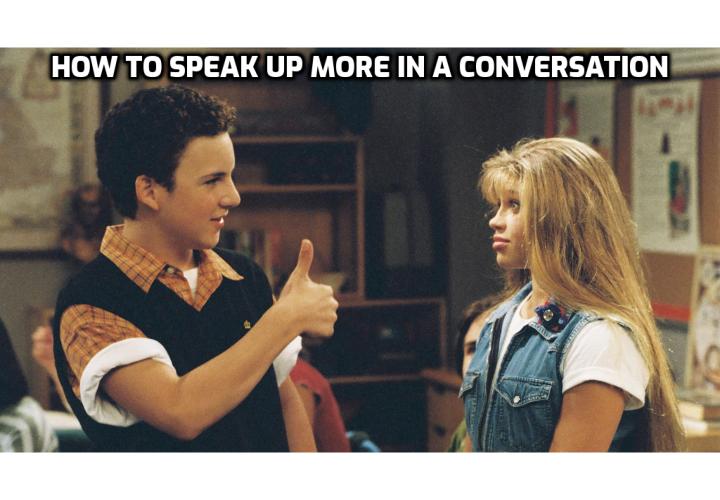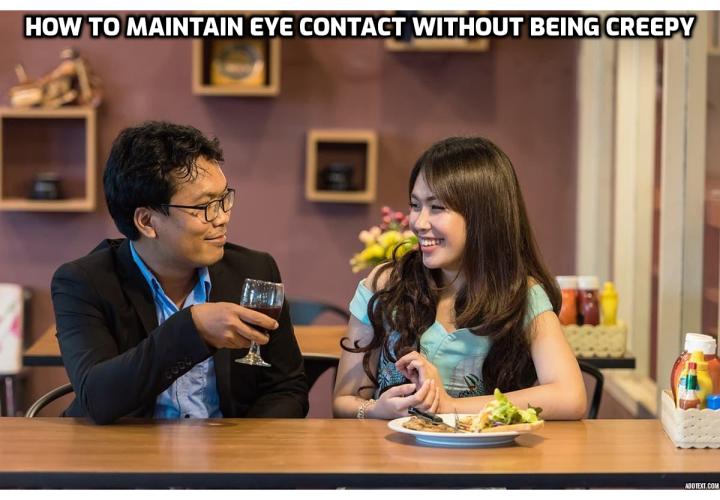CLICK HERE to Find Out How to
Overcome Your Social Phobia
How to Become More Extroverted by Being Less Logical
Do you ever feel you are unable to be social or funny after doing a very logical activity?
It could be a tough homework assignment. Or it could be some project at work that involves you thinking on it deeply for hours at a time.
Maybe you find that after a couple hours of deep thinking, you just aren’t able to be funny or social. It’s like all the fun energy has been sucked out of you.
In this post I’m going to explain why this happens and what to do about it.
Your Brain Works Like a Muscle
Here’s the first thing you need to know: Many shy and introverted people are very logical thinkers.
A lot of them are used to thinking logically most of the time. They may be an engineer, computer programmer, or something similar. This means they are coming up with logic all day.
Why does this matter?
The brain is a funny thing in that the more you do something, the better you get at it. This is called neuroplasticity.
If you spend ten hours a day playing tennis than you will get better at it. Not only will you get better at it, but your brain will actually physically change to adapt to your actions. It will create more neural connections in the parts of your brain needed to play tennis, which makes you into a tennis-playing genius.
You can think of it like building muscle. The more you use a certain muscle group, the bigger it gets, which allows you to lift more in the future.
So the more you use logical thought daily, the better you get at thinking logically. That part of your brain grows and develops. If you’re a computer programmer, this makes you very good at your job over a period of time.
Unfortunately, there’s another side to this that isn’t as beneficial.
Your brain also shrinks the parts of your brain that you don’t use as much. It’s the same as if you have built up a lot of muscle, then you stop working out, and your muscles start to shrink because you aren’t using them anymore. Your brain will physically shrink and even remove the neural connections you do not use very often. In psychology this is called synaptic pruning.
This is the dark side to being very logical all day. If you are logical, then you aren’t able to use different parts of your brain, and that makes them shrink.
The Logical and Emotional Parts of Your Brain
When it comes to being social, your thinking can be separated into two rough categories: logical and emotional.
Logic is the opposite of emotion. When you are in a very logical state of mind all the time, you’ll find it difficult to do things that require the use of the emotional part of your brain.
The logical part of your brain is what you use when you are solving some mental problem, being serious and concentrated, and trying to reach some goal.
You are using the logical part when you are in a business meeting or a job interview and you are talking to people in order to accomplish something or convey some information.
On the other hand, the emotional part is what you use when you are having fun, being spontaneous, and talking freely. Whenever you are talking to someone just for the sake of talking and sharing good emotions between you two you are using the emotional part. Whenever you find yourself having a conversation that doesn’t make much sense logically, but you are talking just to share a good atmosphere between you and someone else, you are using the emotional part.
Learning to Use the Emotional Part More in the Long-Term
Now, which part of your brain do you think is the one you should use when you are socializing? The emotional part of course.
The problem is, most people who are introverted are stuck in the logical part of their brain both in the long-term and in the short-term.
It’s like that quote that goes…
All work and no play makes Jack a dull boy.
In the long-term, by being logical and not emotional for hours a day, you start to weaken your social muscles. It becomes more and more difficult to use the emotional part of your brain when you need it. You’ll see people having fun and you won’t be able to relate to it.
So, in the long-term, you have to make sure you use the emotional, fun-loving part of your brain on a consistent basis.
Every day, joke around with someone, talk spontaneously using the methods I teach in my e-book. This makes sure the emotional part of your brain doesn’t shrink over time and it will build those “neural connections” we talked about at the beginning.
Switching into the Emotional Part More in the Short-Term
This also applies to the short-term. If you have been doing logical things all day, you won’t be able to just “snap into” the emotional part of your brain. For example, if you’ve been doing math homework for the past 2 hours then you are still stuck in the logical mode.
When you are still stuck in the logical mode, it’s going to be very difficult to go up to someone right away and start having fun with them and cracking jokes. You’re probably still going to feel very serious and analytical and not really in the mood for having fun.
So how can you fix this and stop being logical in the short-term?
I’ve found that the main thing is to increase the amount of time your mind is in the “emotional” state of mind vs. the logical one on a daily basis. Have you ever had a day where you spent a lot of time talking to many different people just having a good time?
By the end of the day, you’ve probably found that making conversation became absolutely effortless. This is because you were in the “emotional” state of mind a lot throughout the day. You gained a certain type of momentum that made it easy to have fun.
On the other hand, when you are in a logical state of mind, you have none of this momentum. You are trying to run from a standing start. Talking to people is difficult and feels like you are running uphill.
One technique you can use is to ease yourself into the emotional state of mind gradually. After you are done studying/thinking, try doing something that will get you out of that logical headspace before you go try to have a funny interesting conversation right away. Try watching some comedy or talk to someone in a more logical way to ease out of being so logical gradually.
It takes a little time for your mind to switch states, but after several minutes not doing anything logical you’ll start to feel less serious and more easygoing.
For more tips on how to be more extroverted and confident, watch this video – 3 Ways to Carry On a Conversation and Have Something to Say
If you found this post helpful, then click here check out my products on overcoming shyness and social anxiety.
You’ll learn techniques to become more extroverted, make more friends, and become less shy. All of them are backed by proven scientific and psychological knowledge, which is why they work.
To learn how to overcome your shyness or social anxiety faster than you ever thought possible, click here.
By Sean W Cooper, the author of The Shyness and Social Anxiety System, is an ex-sufferer from social anxiety and shyness. This program is a compilation of his research and effort in overcoming shyness and anxiety.
Sean W Cooper’s Shyness and Social Anxiety system is a step by step audio course broken down into modules that are easy to access. It teaches you ways to start overcoming your social anxiety and self-doubt. The system utilises cognitive behavioural therapy which explores how feelings and thoughts can drive behaviour.
The Shyness and Social Anxiety system is endorsed by professionals and praised by psychologists due to the way it provides the relevant skills to manage issues of shyness and social anxiety.
To find out more, click on How to be More Extroverted and Confident?





